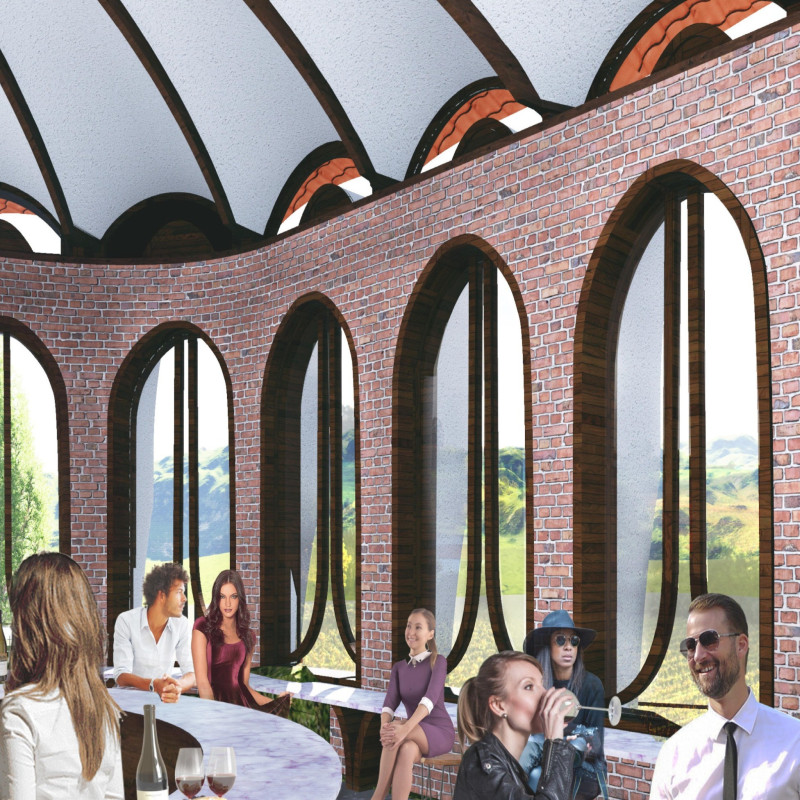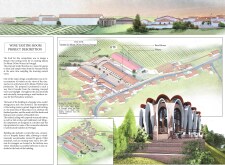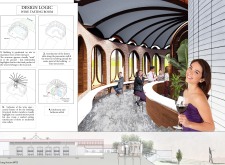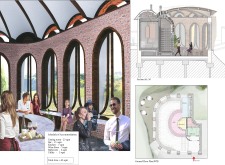5 key facts about this project
At its core, this project represents a commitment to sustainability and community engagement, providing a multifunctional space that enhances the quality of life for its users. The design effectively marries aesthetic appeal with practicality, reflecting a careful consideration for how individuals will interact with the space. Each element of the structure plays a significant role in fulfilling the needs of its occupants while also responding to the local climate and geography.
The architectural layout is characterized by an intelligent organization of spaces, facilitating ease of movement while promoting an inviting atmosphere. In terms of functionality, the project includes various common areas, private spaces, and service zones that are thoughtfully allocated to enhance user experience. Critical attention has been given to the relationship between indoor and outdoor areas, with strategically placed openings and transitions fostering a connection to nature.
The materials selected underscore the design's commitment to quality and longevity. The use of reinforced concrete provides durability and structural integrity, while glass elements enhance natural light penetration, creating a sense of openness and transparency. The incorporation of select wood finishes adds warmth and texture, contrasting beautifully with the modern aesthetic of the project. Natural stone is also utilized, grounding the design within its local context and contributing to its sustainability initiatives through reduced maintenance needs.
Unique design approaches define the project as it incorporates innovative passive design strategies. This includes overhangs that regulate solar gain, as well as rainwater harvesting systems that minimize water consumption. The architecture encourages an adaptive response to climatic conditions, positioning itself as a forward-thinking solution in a world increasingly focused on environmental responsibility. The incorporation of green roofs not only supports biodiversity but also aids in thermal regulation, furthering the sustainability narrative essential to modern architectural discourse.
Visually, the project achieves a sense of balance and harmony through its carefully considered proportions and material palettes. The façade, marked by alternating solid and voids, creates visual interest while allowing for functional shading and opening strategies. Landscape design plays a crucial role, integrating flora that reflects the local ecosystem while providing shade and enhancing the outdoor environment. Pathways are designed to guide visitors naturally through the space, fostering exploration and engagement with both built and unbuilt elements.
The project significantly contributes to its locality, not only by meeting the needs of its users but also by enriching the community landscape. Its design encourages social interactions and functions as a focal point, fostering connections among diverse user groups. This architectural solution exemplifies how design can lift community spirit and foster inclusion, representing a model for future developments.
For those interested in delving deeper into the intricacies of this architectural endeavor, an exploration of the architectural plans, architectural sections, and various architectural designs will provide valuable insights into how the vision was translated into reality. The unique architectural ideas articulated throughout this project invite further discussion and reflection on contemporary architecture's role in enhancing the built environment. Thus, readers are encouraged to consider reviewing the project presentation for a more comprehensive understanding of its design elements and philosophies.


























